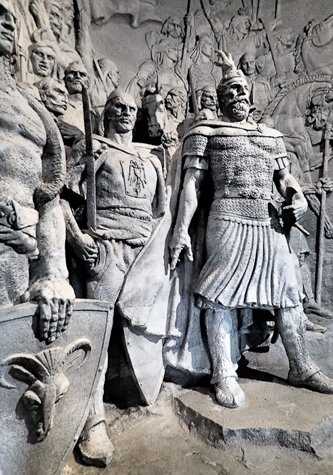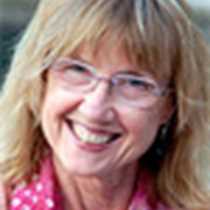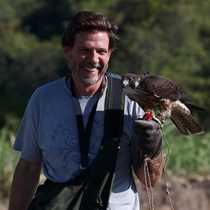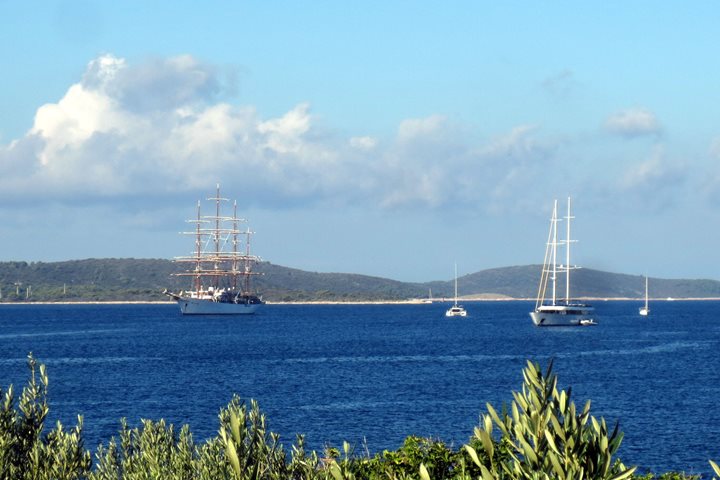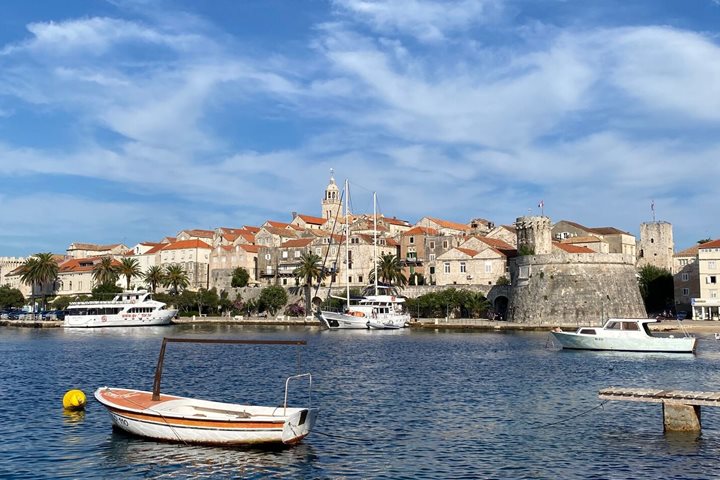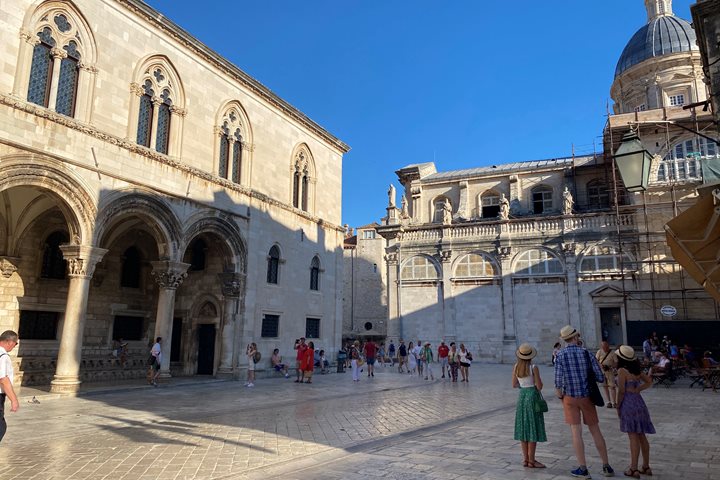The Sea Cloud docked in the Durres, the Roman port of Dyrrhachium that connected the ancient route of Via Egnatia to Byzantium. From there we rode in buses across the countryside to the old capital of Kruje. The landscape was an almost chaotic mixture of antiquity and modernity with cows and sheep grazing next to Mercedes dealerships. After nearly 50 years of isolation under the totalitarian dictatorship of Enver Hoxer, the transition to democracy and a free market economy has been a rocky road for the Albanian people. While the pyramid schemes of 1996-1997 and resulting civil unrest were a serious roadblock, Albania has shown remarkable progress over the past decade, thanks both to increasing foreign investment and Albanian nationals returning home with both money and newly acquired expertise.
Kruje is located in the highlands, the stronghold of the national hero George Kastrioti Skanderbeg, who embodies the resilient Albanian spirit. Taken from his homeland by the Ottoman and forced to convert to Islam, Skanderbeg distinguished himself in military service earning the title Skanderbeg (Lord Alexander after Alexander the Great). When the opportune moment presented itself, he defected and returned to his birthplace to organize steadfast resistance to repeated Ottoman attacks, not only through his military but also his diplomatic skills (he forged alliances with both Naples and Venice). In the old castle of Kruje is the exhaustive museum dedicated to Skanderbeg that documents every aspect of his life and, since it was built in 1981 solely for Albanian consumption, it presents a compelling narrative of a nation forged in adversity. We also visited a charming 18th century Ottoman compound, self-contained with its own garden, forge, tannery, olive press, and distillery (Albanian Muslims belong to the more secular Bektashi sect). The living quarters were organized in the traditional Islamic manner with separate rooms for entertaining male visitors and another room where women visited with each other. In addition to an impressive array of household objects, there is a particularly fine collection of traditional folk costumes for both Muslim and Christians.
Despite the rainy weather, we then explored the cobblestone paths of the medieval bazaar of Kruje. Amongst the almost too colorful souvenir busts of Skanderbeg and bunker ash trays, one could spot some antique coins and weapons from previous centuries, as well as some exquisite handcrafted filigree work that is typical of Albanian jewelers. We then got back on the buses for the ride down to the present day capital of Tirane. The bus ride there and back provided ample opportunity for our guides to give us an overview of Albania’s history and current challenges.
Tirane is a rapidly expanding city of Italianate, Socialist, and Modern architecture. The former mayor (and now president leading Albania towards its goal of joining the European Union) Edi Rama, an energetic artist and basketball player, had the idea of painting the grey communist-built apartment blocks in raucous colors in order to liven the spirits of the city.
Lunch was a sumptuous spread of Balkan mezze accompanied by local wine and beer (as well as the obligatory Fanta and Coke). The folklore troupe “The Eagles” performed a selection of traditional Albanian songs and dances from both the Northern Geg and Southern Tosk regions. Emboldened by the infectious spirit of the young dancers, several guests were enticed into joining in a traditional Balkan horo (round dance). After a short driving tour of the city of Tirane, we returned to the ship for a presentation by Tom O’Brien on the history of the Sea Cloud, followed by an open house tour of the original owners cabins. Dinner was formal and exquisite: a starter of seared scallops, spinach soup with sweetbreads and foam, followed by a loin of venison so tender that it melted in your mouth. By the end of dinner we were all so sated with what we had seen, heard and experienced that we were more than ready for the sea to rock us to sleep.

